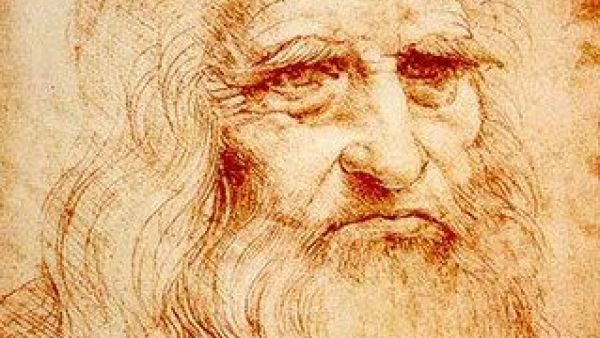He left his mark on the world with timeless masterpieces including the Mona Lisa and The Last Supper.
But even Renaissance genius Leonardo da Vinci could not help getting his fingers dirty – and leaving a mark on his work too.
Not that art experts are complaining. They are hailing an inky thumbprint on one of his anatomical drawings as the clearest ever example of a da Vinci fingerprint, and say it helps us to understand his creative process as a ‘jobbing artist’.
The well-defined print is on the left edge of his drawing ‘The cardiovascular system and principal organs of a woman’, which he created in about 1509.
It is among 144 of his rarely seen drawings, held in trust by the Queen for her successors and the nation, which are to go on display in 12 simultaneous exhibitions across Britain to mark the 500th anniversary of da Vinci’s death.
Because of the potential for damage from exposure to light, all the delicate works on paper can never be on permanent display.
Part of the Royal Collection, they are usually kept in wooden boxes on shelves in the Print Room at Windsor Castle, in carefully controlled temperature and humidity.
The left-hand thumbprint, in the same reddish-brown ink as the ink lines of the drawing, is at the centre of the sheet’s left edge. Da Vinci was left-handed.
Martin Clayton, head of prints and drawings at the Royal Collection Trust, said: ‘Leonardo presumably had ink on his fingers after creating the work and picked it up with inky fingers.
‘The thumbprint is exactly where you would expect a left-handed person to pick the picture up and there is a smudgy index finger print on the back in the corresponding position.
‘There are around half a dozen da Vinci fingerprints on other works but not nearly as clear as this thumbprint, which is visible to the naked eye.’
He added: ‘People tend to think of da Vinci as this incredible genius in an ivory tower, but this reminds us that he was a jobbing artist and you get a sense of how down to earth the creative process was.
He was not some god-like figure, but a human just like us, and he worked in the same conditions as every other artist.’
The drawing bearing the thumbprint will be among works on display at the National Museum Cardiff from February 1 to May 6.
Other works will be at other venues, including in Birmingham, Liverpool, Bristol, Glasgow and Belfast, during the same period.
All 144 will then be brought together to form part of an exhibition until October of more than 200 da Vinci works from the Royal Collection at The Queen’s Gallery, Buckingham Palace, the largest exhibition of his work for over 65 years.
Also on display will be two blank sheets of paper which, when seen in ultraviolet light, contain ‘Studies of hands for the Adoration of the Magi’ (circa 1481), according to research by Alan Donnithorne, former head of paper conservation at the Royal Collection Trust.
This article has been adapted from its original source.








